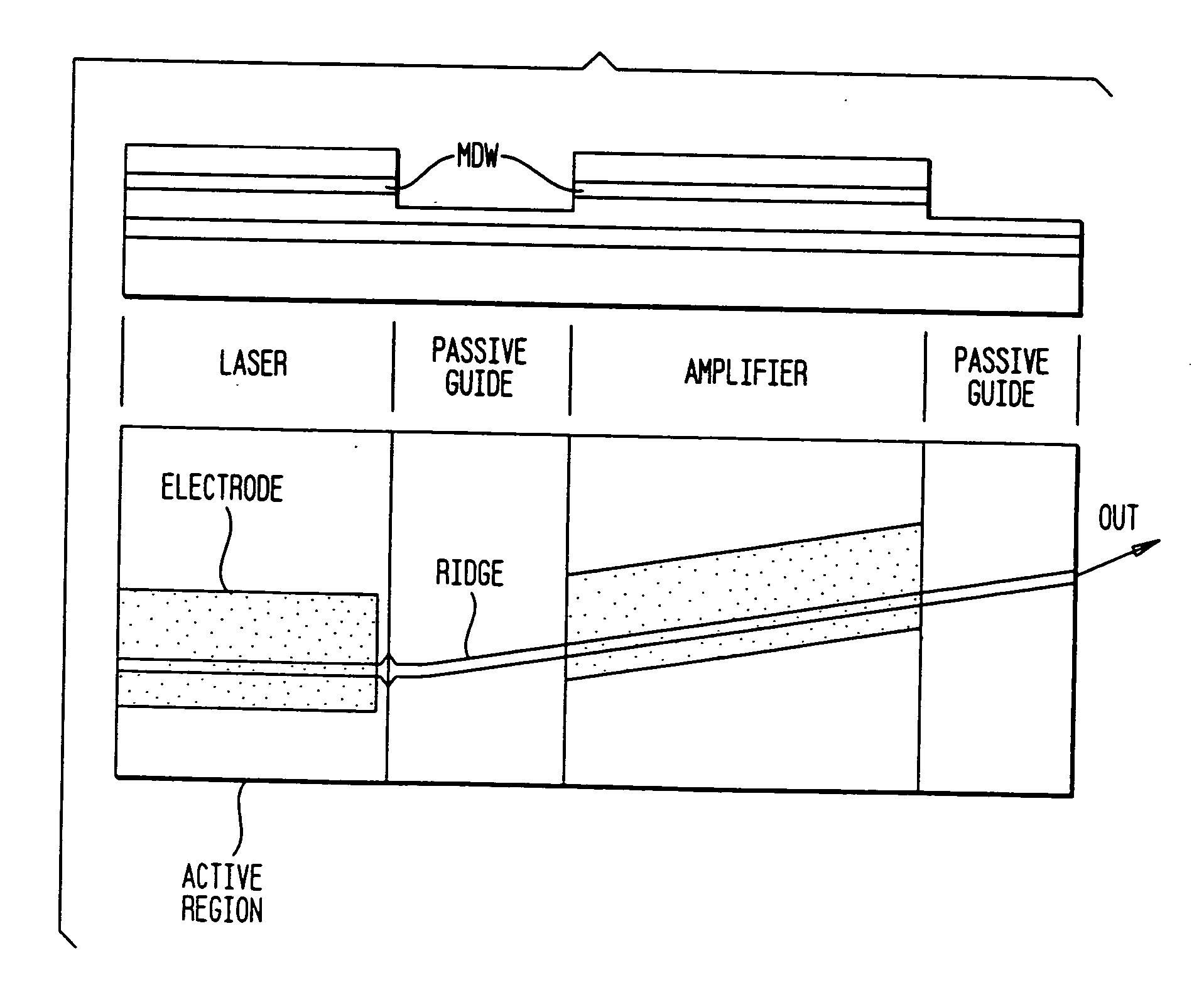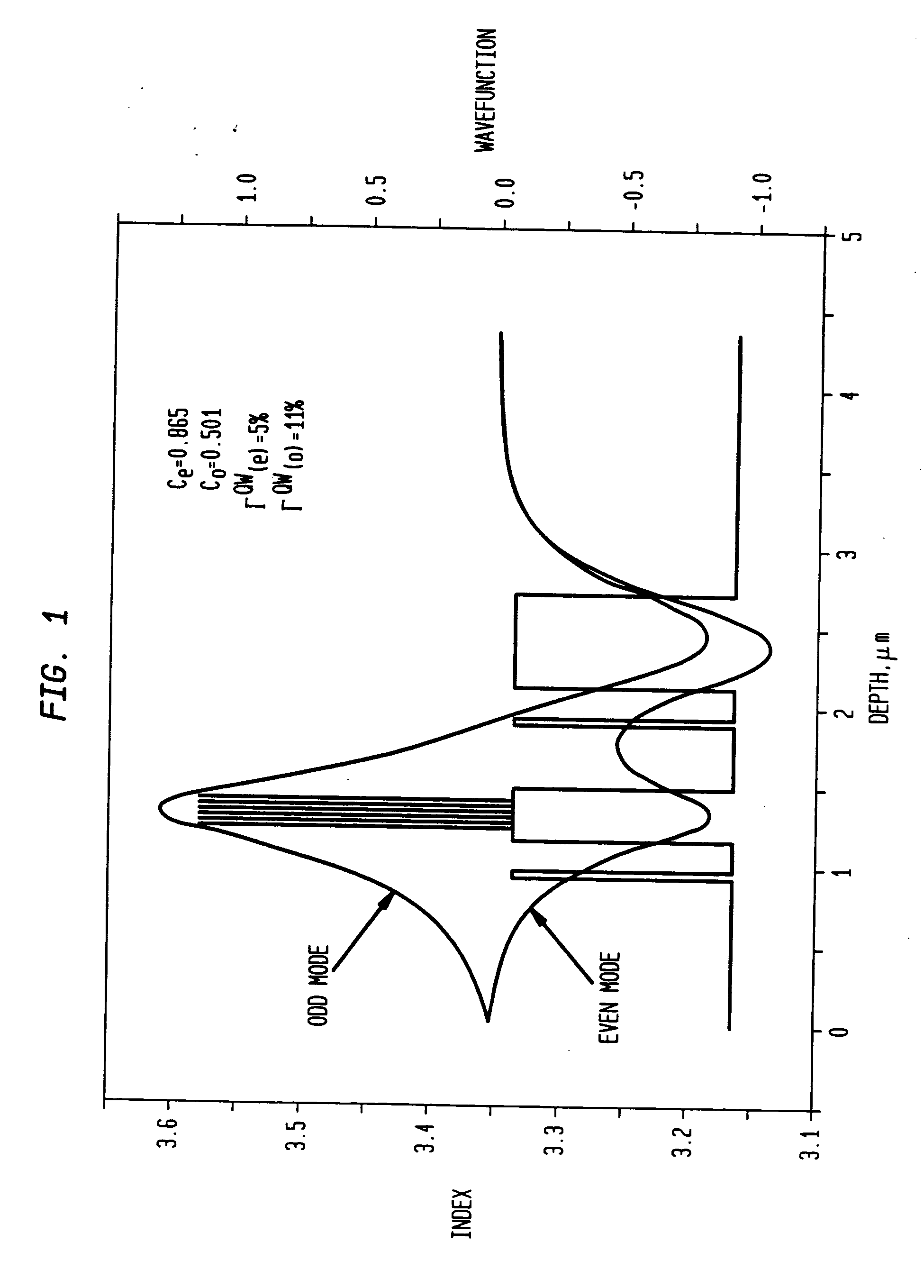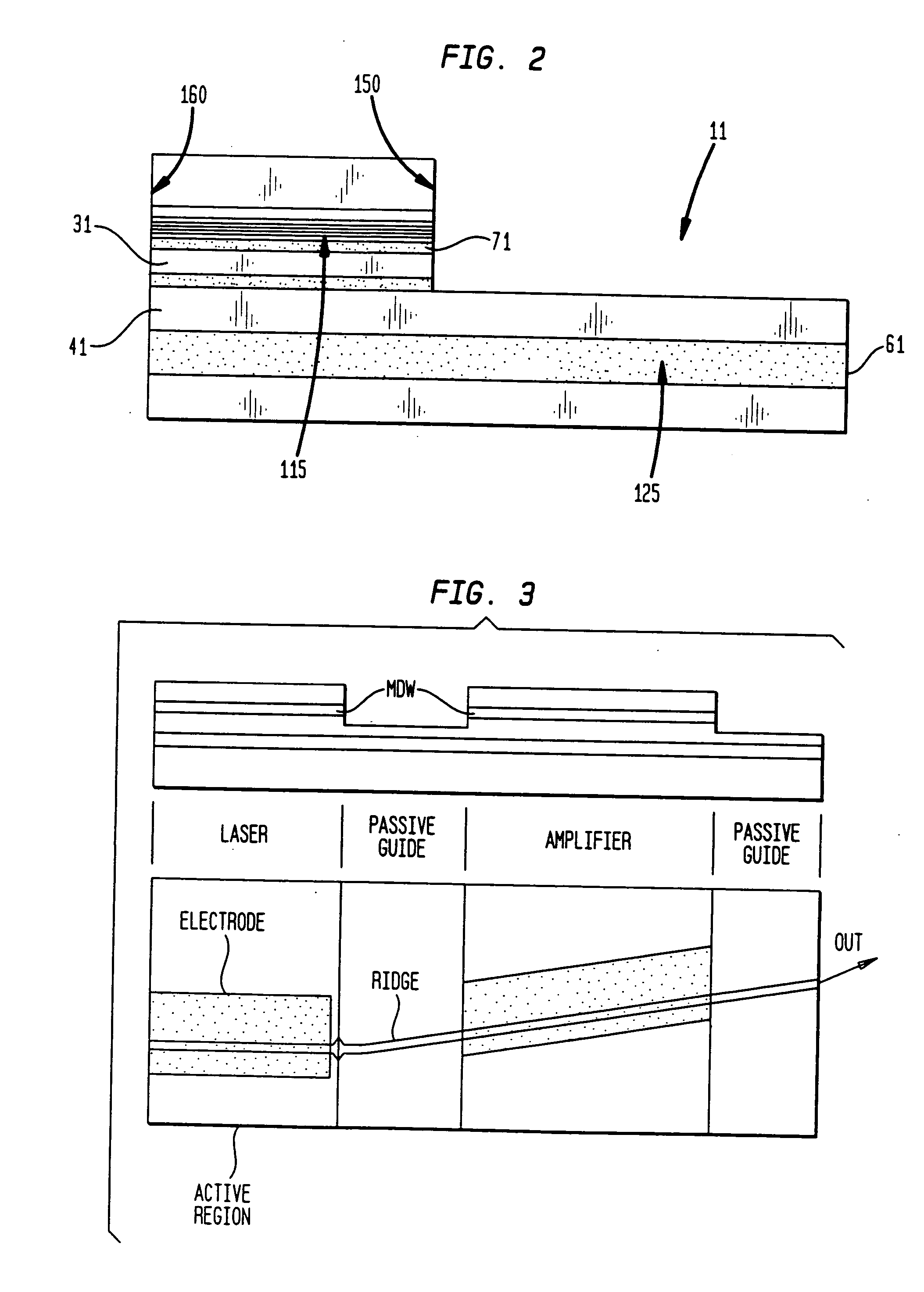Twin waveguide based design for photonic integrated circuits
a photonic integrated circuit and waveguide technology, applied in the field of optical communication, can solve the problems of coupling to the passive waveguide, the relative inability to control the laing threshold current, and the waveguide coupling is strongly dependent on the device length, so as to reduce the coupling loss in the non-tapered atg structure, reduce the modal gain, and reduce the coupling loss
- Summary
- Abstract
- Description
- Claims
- Application Information
AI Technical Summary
Benefits of technology
Problems solved by technology
Method used
Image
Examples
Embodiment Construction
[0021] As already noted in the Background, the twin-waveguide approach to photonic integration represents a versatile platform technology by which a variety of PICs, each with different layouts and components, can be fabricated from the same base wafer—that wafer being grown in a single epitaxial growth step. Typically, the upper layer is used for active devices with gain (e.g., lasers SOAs), whereas the lower layer, with a larger bandgap energy, is used for on-chip manipulation of the optic energy generated by the active device(s) via etched waveguides. With such a TG structured PIC, active components such as semiconductor optical amplifiers (SOAs), Fabry-Perot and single frequency distributed Bragg reflector (DBR) lasers can be integrated with passive components such as Y-branches and multi-beam splitters, directional couplers, distributed Bragg feedback grating sections, multimode interference (MMI) couplers and Mach-Zehnder modulators.
[0022] As previously noted, the simple TG s...
PUM
| Property | Measurement | Unit |
|---|---|---|
| angle | aaaaa | aaaaa |
| width | aaaaa | aaaaa |
| energy gap cutoff wavelength | aaaaa | aaaaa |
Abstract
Description
Claims
Application Information
 Login to View More
Login to View More - R&D
- Intellectual Property
- Life Sciences
- Materials
- Tech Scout
- Unparalleled Data Quality
- Higher Quality Content
- 60% Fewer Hallucinations
Browse by: Latest US Patents, China's latest patents, Technical Efficacy Thesaurus, Application Domain, Technology Topic, Popular Technical Reports.
© 2025 PatSnap. All rights reserved.Legal|Privacy policy|Modern Slavery Act Transparency Statement|Sitemap|About US| Contact US: help@patsnap.com



